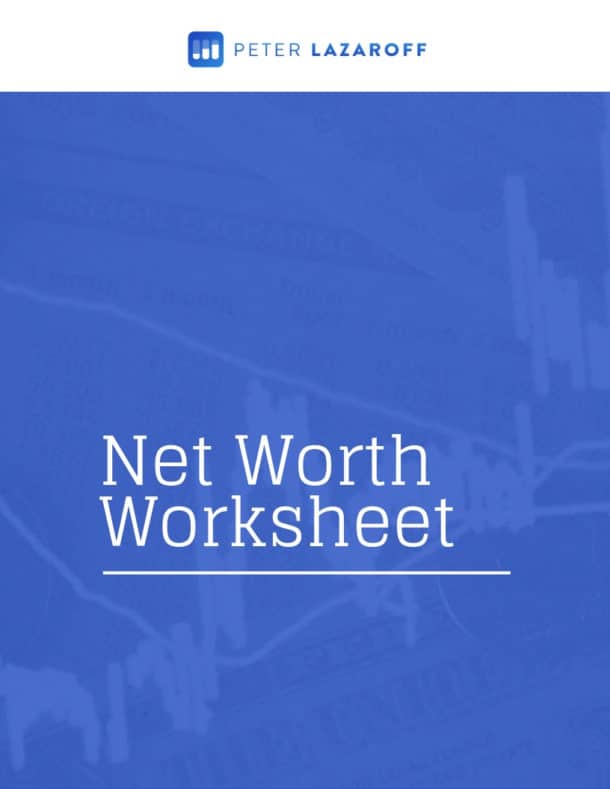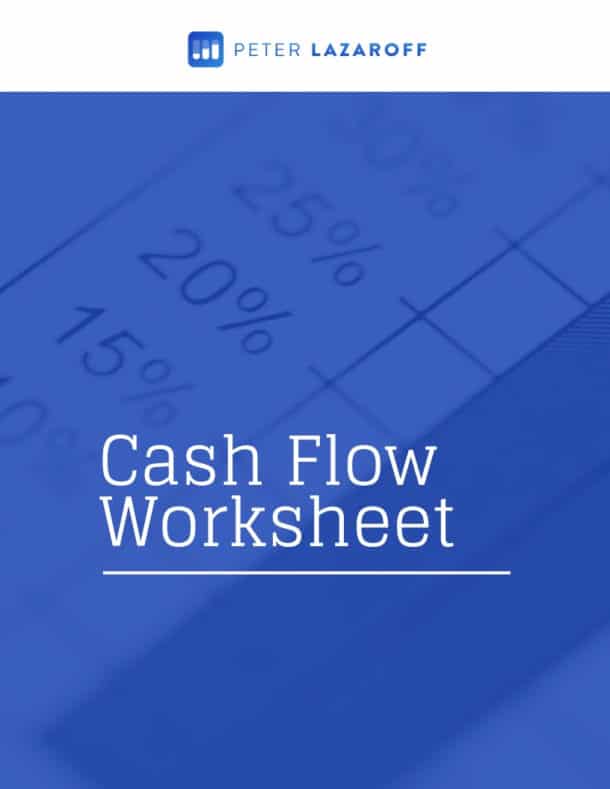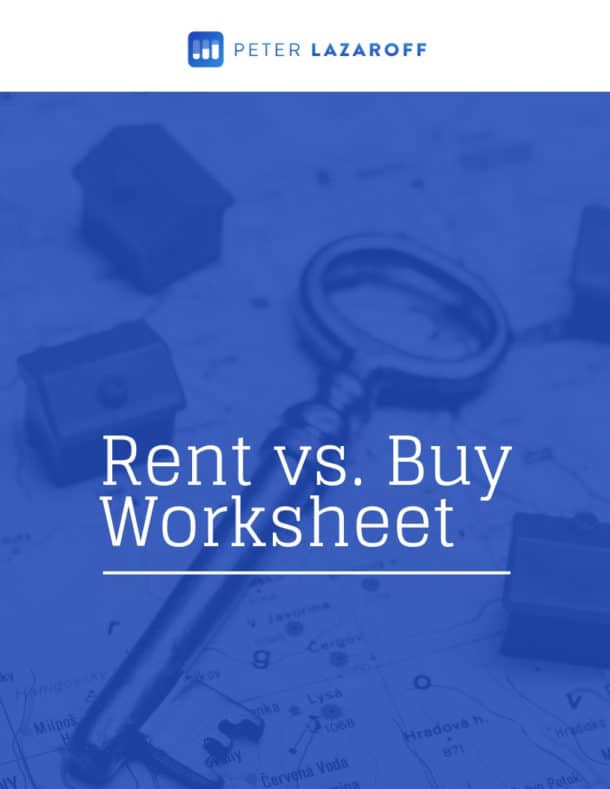Listen Now
Today we’re tackling one of investing’s biggest myths—the idea that you should only spend the dividends and interest from your portfolio and never touch the principal.
At first glance, this feels safe, responsible, even intuitive.
But here’s the truth: this income-only approach isn’t nearly as safe or effective as it seems. In fact, focusing exclusively on income can lead you into hidden risks like chasing yield, sacrificing diversification, and inadvertently increasing the odds of running out of money in retirement.
And if you’re not entirely sure whether your current strategy is sustainable—or where your money is really going—my Cash Flow Worksheet can help. It’s a simple tool to track your spending and make sure your money is working for you, not slipping through the cracks. You’ll find a link to download it at the top of the episode description.
In this episode, we’ll expose the biggest misconceptions about income-focused investing and explain why adopting a total return mindset—a strategy that considers both income and capital appreciation—is the smarter, safer, and more flexible approach.
By the end of this episode, you’ll understand:
- Why the income-only strategy feels comforting but often leads investors astray.
- How a total return strategy reduces risk and enhances portfolio longevity.
- Practical ways to shift your thinking and implement a total return strategy effectively.
Let’s dive in.
Sign up for my newsletter so you can easily reply to my emails with your thoughts or questions for the podcast:
Income vs Total Return: Understanding the Difference
Total return is simply the combination of two things:
- Income from dividends and interest.
- Capital appreciation, or the growth in your investment’s value.
On the other hand, an income-only investor tries to cover all their expenses solely from dividends and interest, preserving their principal at all costs. This might sound safe, but research consistently highlights several pitfalls:
- Over-concentration in high-dividend sectors.
- Increased volatility and risk during market downturns.
- Reduced flexibility and tax inefficiency.
Common Misconceptions About Income Investing
The income-only mindset persists due to emotional biases:
- Mental accounting: Investors feel safer spending dividends rather than selling principal.
- Loss aversion: Selling shares feels like losing money, despite the economic reality being the same.
- Anchoring: Familiar dividend stocks appear safer due to historical comfort.
Behavioral finance experts Wade Pfau and Alejandro Murguia have documented these biases, supported by institutional research from Mercer, highlighting how these emotional factors drive suboptimal investment decisions.
Why Total Return is Superior for Retirement Spending
Let’s clearly outline why a total return strategy is better when spending from your portfolio in retirement.
Imagine you have a $2 million portfolio and want to withdraw $80,000 annually, a 4% withdrawal rate. If your portfolio yields just 2%, that’s only $40,000 in income—where does the remaining $40,000 come from?
Income-only investors might chase higher yields, moving into riskier assets like high-yield bonds or dividend-heavy stocks, increasing their portfolio’s risk precisely when stability is most needed.
Conversely, a total return approach provides more options:
- Flexible withdrawals: Draw from both dividends and appreciation, allowing more strategic decisions.
- Lower risk: Avoid yield-chasing and maintain broad diversification.
- Improved tax efficiency: Optimize withdrawals for tax advantages.
According to research published in the Financial Analysts Journal, total return portfolios have consistently shown higher sustainability and better management of market volatility compared to income-only portfolios.
Practical Steps to Adopt a Total Return Strategy in Retirement
Successfully implementing a total return strategy during retirement means intentionally structuring your withdrawals and managing your portfolio thoughtfully. Here are several actionable steps:
1. Determine Your Withdrawal Needs Clearly
Begin by identifying your required spending each year—ideally in dollar terms—to support the lifestyle you desire in retirement. Don’t anchor your withdrawals to dividends or yield; instead, focus explicitly on your real-world expenses.
2. Strategically Rebalance Your Portfolio
Regularly rebalance your portfolio to generate cash flow. This approach naturally prompts you to sell investments that have performed well (selling high) and buy more of those that haven’t (buying low), keeping your portfolio aligned with your long-term objectives.
Also see EP.144: Why You Must Take Capital Gains to Rebalance Your Portfolio
3. Maintain an Adequate Cash Buffer
Keep roughly 6 to 12 months’ worth of expenses in cash or cash equivalents. Having this cash buffer reduces the psychological stress of market volatility and helps avoid selling assets at depressed values during downturns.
4. Optimize Your Tax Situation
Hold income-generating investments, such as bonds, in tax-deferred accounts, while placing investments with more favorable tax treatment—like index funds or growth-oriented assets—in taxable accounts. Additionally, consider tax-loss harvesting and capital gains strategies to further enhance your tax efficiency.
Also see EP.162: When Tax-Loss Harvesting Makes Sense (And When It Doesn’t)
5. Think Holistically About Your Portfolio
Avoid treating dividends or interest as the primary driver of your retirement strategy. Instead, view your portfolio as a total return vehicle—designed specifically to sustainably support your spending needs, manage risk effectively, and adapt to your changing financial circumstances.
Following these practical steps will help ensure your total return strategy maximizes your financial security, flexibility, and peace of mind throughout retirement.
Total Return Matters for Wealth Accumulation, Too
Although this episode focuses primarily on those living off their portfolios, adopting a total return strategy is equally essential during the wealth accumulation phase. A total return approach maximizes reinvestment, harnesses compounding growth, and provides greater long-term financial stability.
Why a Total Return Strategy Is the Key to a Safer, Smarter Retirement
To sum it up, while the income-only approach might seem comforting, evidence shows it often creates unnecessary risks and limits your financial flexibility. A total return approach, however, provides superior diversification, flexibility, and long-term portfolio sustainability.
Your portfolio’s purpose is to support your goals—not just yield dividends.
Thanks for joining The Long Term Investor. If you enjoyed this episode, subscribe and check out previous episodes covering effective portfolio management and retirement strategies. Until next time, invest wisely.
Resources:
- Selecting a Personalized Retirement Income Strategy (Murguia & Pfau, SSRN)
- Total Return vs. Income Investing: Same, but Different (Retirement Researcher)
- Redefining the Optimal Retirement Income Strategy (Financial Analysts Journal)
- Unleash the Potential of a Total Return Approach to Generate Portfolio Distributions (Mercer)
- EP.144: Why You Must Take Capital Gains to Rebalance Your Portfolio
- EP.162: When Tax-Loss Harvesting Makes Sense (And When It Doesn’t)
The Long Term Investor audio is edited by the team at The Podcast Consultant
Submit Your Question For the Podcast
Do you have a financial or investing question you want answered? Submit your question through the “Ask Me Anything” form at the bottom of my podcast page.
Support the Show
Thank you for being a listener to The Long Term Investor Podcast. If you’d like to help spread the word and help other listeners find the show, please click here to leave a review.
I read every single one and appreciate you taking the time to let me know what you think.
Free Financial Assessment
Do you want to make smart decisions with your money? Discover your biggest opportunities in just a few questions with my Financial Wellness Assessment.

Disclosure: This content, which contains security-related opinions and/or information, is provided for informational purposes only and should not be relied upon in any manner as professional advice, or an endorsement of any practices, products or services. There can be no guarantees or assurances that the views expressed here will be applicable for any particular facts or circumstances, and should not be relied upon in any manner. You should consult your own advisers as to legal, business, tax, and other related matters concerning any investment.
The commentary in this “post” (including any related blog, podcasts, videos, and social media) reflects the personal opinions, viewpoints, and analyses of the Plancorp LLC employees providing such comments, and should not be regarded the views of Plancorp LLC. or its respective affiliates or as a description of advisory services provided by Plancorp LLC or performance returns of any Plancorp LLC client.
References to any securities or digital assets, or performance data, are for illustrative purposes only and do not constitute an investment recommendation or offer to provide investment advisory services. Charts and graphs provided within are for informational purposes solely and should not be relied upon when making any investment decision. Past performance is not indicative of future results. The content speaks only as of the date indicated. Any projections, estimates, forecasts, targets, prospects, and/or opinions expressed in these materials are subject to change without notice and may differ or be contrary to opinions expressed by others.
Please see disclosures here.
















